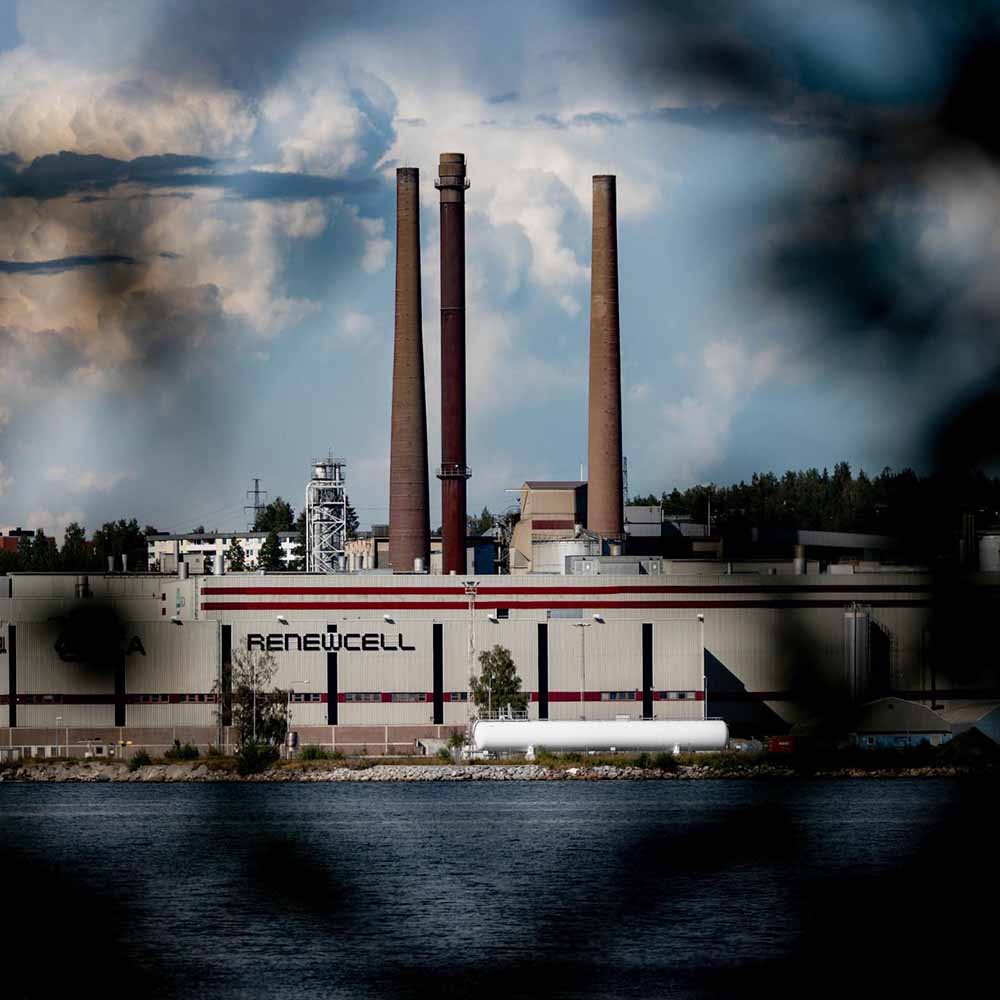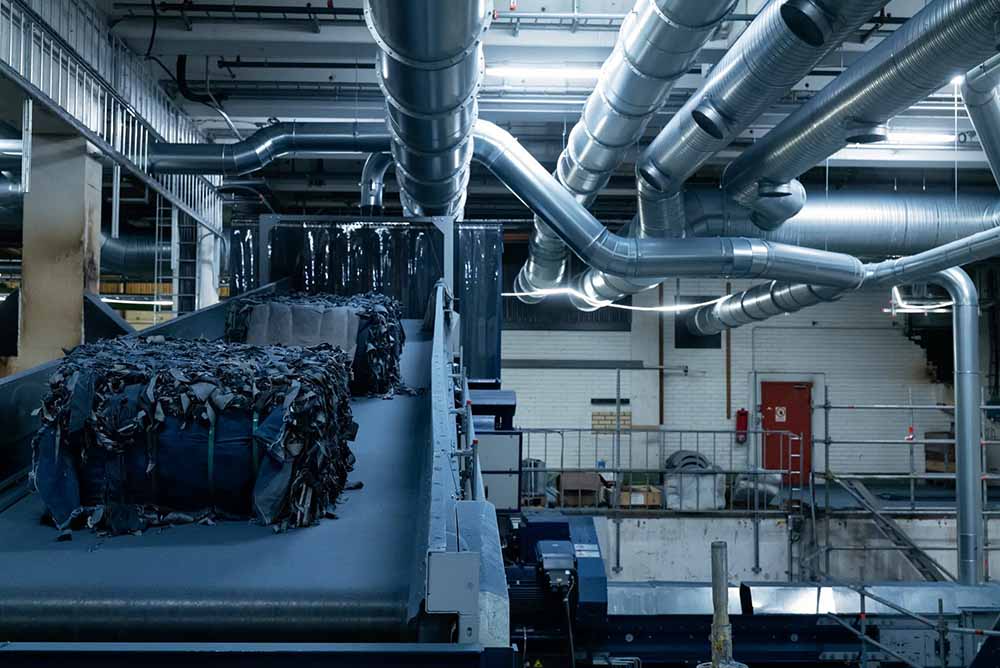The promise of sustainable fashion has long been heralded as a beacon of hope in an industry fraught with environmental and ethical concerns. From reducing carbon footprints to minimising waste, the shift towards eco-friendly practices seemed not only inevitable but imperative. Yet, the recent bankruptcy of Renewcell, a recycling start-up touted as fashion's leading textile-to-textile recycling technology, has cast a shadow over the economic viability of sustainable initiatives within the fashion industry.
Renewcell's Journey: A Sustainable Fashion Revolution
In the bustling world of fashion, where trends change in the blink of an eye, Renewcell emerged as a way to a more sustainable future. Armed with a revolutionary product called Circulose, crafted from recycled clothing, the company aimed to disrupt the industry's reliance on emissions-heavy virgin cotton. However, despite promising beginnings, Renewcell's journey took an unexpected turn, leading to bankruptcy and a flurry of questions about what went wrong.

Image Source: Instagram/renewcell
At first glance, Renewcell seemed poised for success. With substantial financing from industry giants like H&M, the company had the resources to bring Circulose to life. Additionally, major players in the fashion world, including Levi's, expressed interest in integrating the sustainable material into their products. However, as time passed, cracks began to appear in Renewcell's ambitious plans.
Challenges on Multiple Fronts
Renewcell faced a myriad of challenges that ultimately contributed to its downfall. Despite the undeniable appeal of Circulose, the material came with a hefty price tag, making it less appealing to cost-conscious textile factories. Moreover, the fast-paced nature of the fashion industry, with its emphasis on speed and profit, proved to be a stumbling block. Many companies expressed interest in sustainability but lacked the patience to invest in it.

Image Source: Instagram/renewcell
Internal Struggles and Management Issues
Amid external pressures, Renewcell also grappled with internal turmoil. The abrupt firing of CEO Patrik Lundström and subsequent stock plummet sent shockwaves through the company. Production inefficiencies further compounded the problem, with a growing gap between output quality and demand for high-quality Circulose pulp.
Building a New Supply Chain
Renewcell's ambitious vision required the creation of an entirely new supply chain, from sourcing recycled garments to transforming raw materials into finished products. However, this endeavor proved to be a daunting task, as the company navigated uncharted territory and attempted to establish relationships with various stakeholders worldwide.

Image Source: Nytimes.com
Industry Mindset
The entrenched 'take, make, waste' mentality within the fashion industry presented another obstacle. While companies expressed interest in sustainability, many lacked the patience and commitment required to prioritize eco-friendly practices over profit margins.
Renewcell's Missed Opportunity: Tapping into Asian Markets
Renewcell faced a pivotal missed opportunity—the underutilization of Asian markets. Asia stands as the global epicentre of textile manufacturing, boasting a sprawling network of factories across countries like China, India, Bangladesh, and Vietnam. With a significant share of global garment production, Asian markets represent a prime target for sustainable material adoption.

Image Source: Nytimes.com
Renewcell struggled to convince global supply chains to embrace its innovative product fully. Traditional processes deeply rooted in the industry's history made it challenging to implement widespread changes in favour of Circulose.
Lessons Learnt:
Systemic Change: Achieving true sustainability in fashion demands more than just technological innovation. It requires systemic change encompassing supply chain dynamics, industry norms, and consumer behaviour.
Collaborative Partnerships: The collapse of Renewcell underscores the importance of collaborative partnerships in driving sustainable initiatives forward. By fostering alliances between stakeholders, the fashion industry can overcome economic barriers and accelerate the transition towards eco-friendly practices.
Consumer Education: Educating consumers about the environmental and social impacts of their purchasing decisions is essential. Empowering consumers to make informed choices can catalyse demand for sustainable fashion and incentivize companies to prioritize eco-friendly practices.
Why Turning Sustainable Is a Heavy Cost for Fashion

Image used for representational purposes only.
A recent 2021 study by the Fashion for Good (FFG) and non-profit Apparel Impact Institute (Aii) highlighted the significant carbon footprint of the fashion industry, accounting for 2 per cent of annual global greenhouse gas emissions. The majority of these emissions occur during the raw material extraction and processing stages of the supply chain. With increasing pressure from regulations, media attention, consumer awareness, and shareholder demands, the fashion industry is facing a growing imperative to transition to sustainable practices.
The report emphasizes the need for a radical transformation within the industry, offering a variety of actionable opportunities across its $2 trillion supply chain. These solutions aim to achieve a net-zero industry by 2050, with a combined potential to reduce greenhouse gas emissions by 2.5 gigatonnes of CO2 equivalent. However, the total investment required exceeds $1 trillion, with existing solutions requiring 61 per cent of financing for existing solutions and the remaining 39 per cent to develop and scale innovative solutions.
Despite the considerable investment needed, current levels of commitment and financing fall short of what is required for the industry's decarbonisation as per the report. To overcome these barriers and mobilise the necessary funding, cooperation is needed from key stakeholders such as financiers, manufacturers, brands, philanthropy, and governments.
As the dust settles on Renewcell's bankruptcy, it serves as a sobering reminder of the formidable challenges facing sustainable fashion. However, amidst the wreckage lies an opportunity for reflection, innovation, and a renewed commitment to building a fashion industry that not only looks good but does good for the planet and its people.